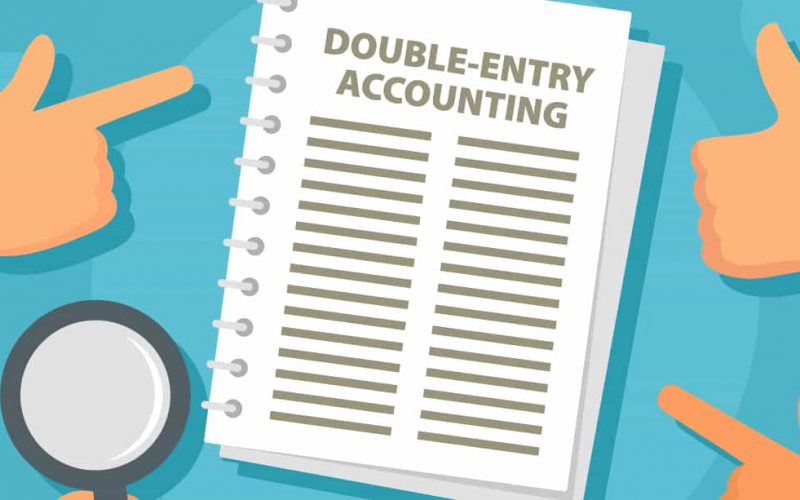Double-entry accounting is a bookkeeping method that balances a company's accounts and presents a true financial picture of its finances. The accounting equation Assets = Liabilities + Equity is used to calculate this method.
To keep the equation balanced, credits from one account must equal debits from another. Accountants record transactions to each account using debit and credit entries, and each account in this equation appears on a company's balance sheet.
Double-entry accounting has been practiced for hundreds, if not thousands, of years and was first documented in 1494 in an Italian book by Luca Pacioli.
Accounting with two entries Defined
Double-entry accounting, as the name implies, is a standard accounting method in which each transaction is recorded in at least two accounts, resulting in a debit to one or more accounts and a credit to one or more accounts.
In each case, the total amount of transactions must balance out to ensure that all dollars are accounted for. Debits are usually recorded on the ledger's left side, while credits are recorded on the right.
Public companies must follow the accounting rules and methods set forth by generally accepted accounting principles (GAAP), which are overseen by the Financial Accounting Standards Board, a non-governmental organization (FASB).
Double-entry accounting is also the most efficient way for a business to track its financial growth, especially as the company grows in size.
Maintaining Accurate Records
The likelihood of clerical errors increases as a company's business grows. Although double-entry accounting does not completely eliminate errors, it does reduce the impact of any errors on the overall accounts.
Since the accounts are set up to check each transaction for balance, errors will be flagged to accountants quickly before they cause a domino effect of other errors. Furthermore, the account structure makes it easier to trace back through entries to determine the source of an error.
Types of Account
You'll need to use a variety of accounts when using double-entry accounting. The following are some examples of important account types:
Asset accounts show the dollar value of items a company owns, such as cash in its checking account or the cost of its warehouse.
Liability accounts show what the company owes, such as a mortgage on a building, an equipment loan, or credit card debt.
Money received is represented by income accounts, such as sales revenue and interest income.
Expense accounts show how much money was spent on things like bought-for-sale items, payroll, rent, and advertising.
A chart of accounts, which contains all of the balance sheet and income statement accounts in which accountants make entries, is required in the double-entry system. A company can add and customize accounts to better reflect its operations, accounting, and reporting needs.
Accounting Software Applications
Most business accounting software uses double-entry accounting; without it, an accountant would have trouble keeping track of inventory and accounts payable and preparing year-end and tax records. Accounting software packages for businesses come with the basic double-entry accounting structure. When setting up the software, a firm would configure its generic chart of accounts to reflect the existing accounts already in use by the company.
Aside from the balance sheet, income statement, and statement of cash flows, accounting software typically generates various financial and accounting reports. The "trial balance," a commonly used report, lists every account in the general ledger that has any activity.
All accounts with a normal debit balance and those with a normal credit balance are labeled in the trial balance. The trial balance's total should always be zero, and the total debits and credits should be exactly equal.
The following examples exemplify double-entry accounting
If you want to record $500 in sales revenue, you'll need to make two entries: a $500 debit entry to increase the balance sheet account "Cash," and a $500 credit entry to increase the income statement account "Revenue."
Another example is the $1,000 purchase of a new computer. You'll need to enter a $1,000 debit to increase the "Technology" expense account on your income statement and a $1,000 credit to decrease the "Cash" account on your balance sheet.
The opposite is also true: If your company takes out a bank loan, your assets will increase, but your liabilities will increase by the same amount. Double-entry accounting makes sure you've recorded both parts of the transaction because the total of the accounts with debit balances should match the total of the accounts with credit balances once your entries are complete.
Most Commonly Asked Questions (FAQs)
In double-entry accounting, what are the terms credits and debts?
Credits make deposits into accounts, while debits take money out of them. It's a credit when you've been paid. A debit is created when you make a payment to someone else.
Who was the one who came up with the concept of double-entry bookkeeping?
Luca Pacioli, a Franciscan friar who lived in the 15th century, is credited with being the first to write about modern accounting methods such as double-entry accounting. Double-entry accounting, on the other hand, was not invented by him. He merely provided the first description of the money management practises used by Venetian merchants.


